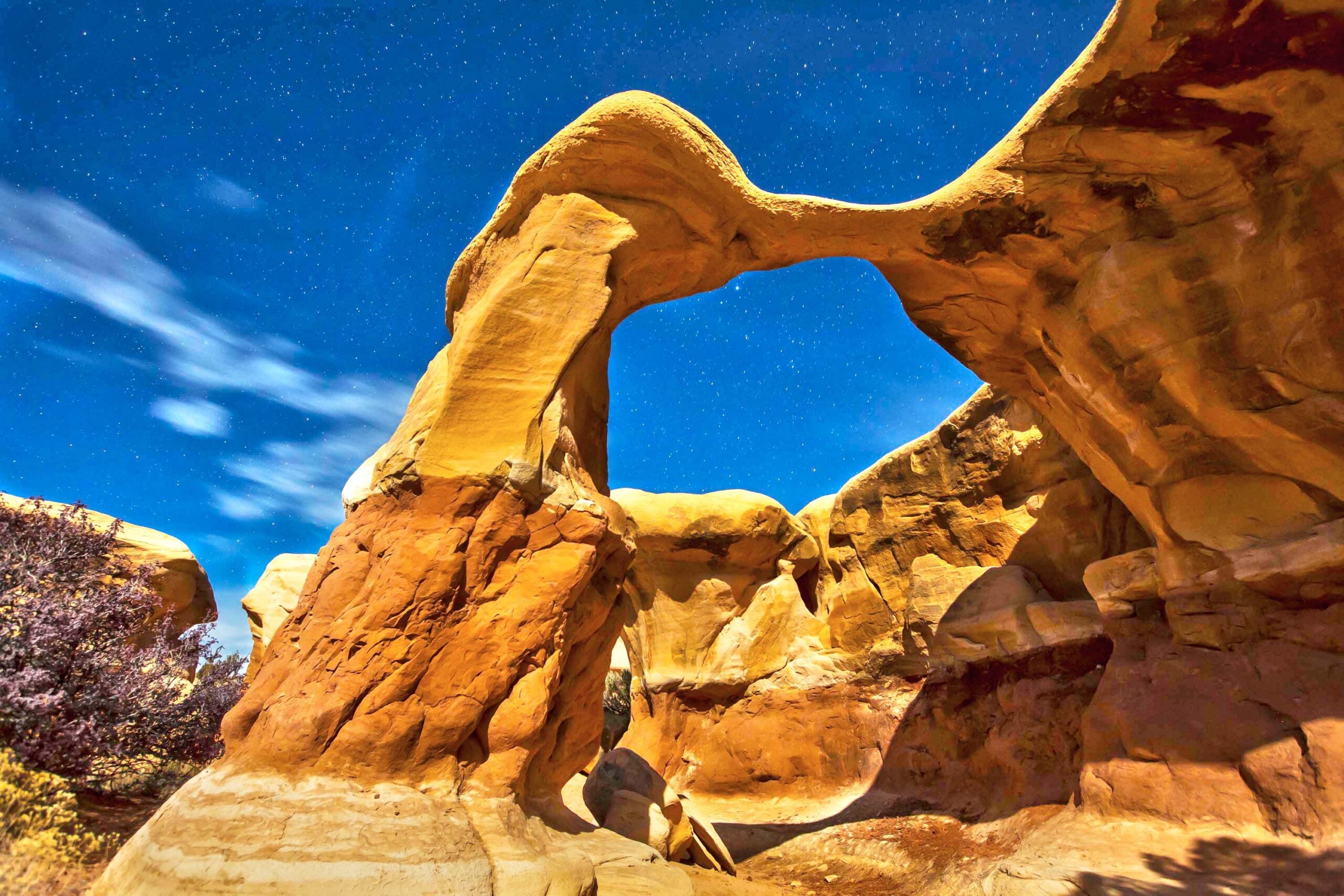Utah may be trading a dinosaur wonder for a coal mine
Earthjustice attorney Heidi McIntosh weighs in on Trump's attempt to take down national monuments

This page was published 8 years ago. Find the latest on Earthjustice’s work.
Editor’s note: This article was originally published in The Salt Lake Tribune.
A funny thing happened in rural southern Utah after President Clinton designated the 1.7 million-acre Grand Staircase-Escalante National Monument in 1996. Utah politicians howled, in chorus with coal, oil and gas interests, that the monument would spell economic doom for the region. But not so, as it turns out.
Instead, the communities in this rugged landscape thrived. They’ve grown sustainable economies and rejected the boom-and-bust fossil fuel industries that have long pillaged the West’s fragile landscapes.
Between 2001 and 2015, the population in the two counties bordering Grand Staircase grew by 13 percent, jobs increased 24 percent and real personal income grew 32 percent. In other words, the monument has been a hit for jobs and the economy. Travel and tourism boomed in the region, offering 1,630 jobs around Grand Staircase; new business has bloomed in the desert, and property values have grown.
In the big picture, recreation from adventure-seekers, hikers, amateur geologists and families simply getting outdoors now funnels more than $12 billion into Utah’s economy.
Over the past 21 years, 21 new species of dinosaurs have been unearthed by scientists in the monument.
Why are people flocking to see Grand Staircase-Escalante? One big draw is the trove of spectacular dinosaur fossils that are found nowhere else on Earth.
Over the past 21 years, 21 new species of dinosaurs have been unearthed by scientists in the monument, leading some to call these lands a “Dinosaur Shangri-la,” or a “geologic wonderland.” Grand Staircase holds one of the richest collections of fossils from the Late Cretaceous Period, which gives scientists and the public alike an unparalleled window into the dinosaurs that lived in these lands 10 million years ago. They included frilled dinosaurs, duck-billed dinosaurs and two new astounding tyrannosaurs (whose names translate to “monstrous murderer” and “king of gore,” sure to draw awe from young dinosaur enthusiasts).
And for historians and anthropologists, the region is a window into the human exploration of the West from the civilizations of the Southern Paiute and Navajo peoples to the expeditions of John Wesley Powell and the trails of the Mormon pioneers seeking refuge in the desert. Ghost towns, rock houses, cowboy camps and the renowned Hole-in-the-Rock Trail all are preserved within the boundaries of the monument. Grand Staircase’s mind-twisting slot canyons draw adventurers from around the world. Peregrine falcons, bald eagles, mountains lions and bears roam these lands.
In myriad ways, national monument protections for the rugged lands of Grand Staircase, managed under federal law well before Utah achieved statehood, have served us well. It’s a success story for the Antiquities Act, the 1906 law that authorizes presidents to protect the nation’s archaeological, scenic and scientific wonders as national monuments.
Still, that remarkable success hasn’t stopped the fossil fuel industry from a campaign to roll back protections for the monument. Banking on millions in contributions to the Trump campaign and campaign funds for key Utah lawmakers, the industry looks determined to bring coal mining and oil and gas drilling to these unspoiled landscapes.
Mining companies have long coveted access to the coal deposits of the Kaiparowits Plateau, a rugged and remote area current protected by its monument status. It is the same plateau that holds troves of dinosaur fossils and the promise of new discoveries. While demand for coal slumps further into its inexorable decline, the industry is pursuing a last-ditch effort to wring profits from lands that belong to all Americans who value their natural beauty and quiet solitude. President Trump’s sham review of national monuments like Grand Staircase seems designed to help the coal industry hold off a clean energy future for us just a little longer.
While the Trump administration appears eager to convert monument lands into a coal mine, an intricate land swap that was negotiated 20 years ago may prove impossible to unravel.
Reversing the monument now would constitute a historic rip-off by the state.
After President Clinton designated the monument, Congress passed legislation modifying its boundaries in 1998. Congress then approved a land swap in which the state of Utah received 145,000 acres of mineral-rich federal lands and $50 million from the federal treasury.
A lot of folks have forgotten about that deal. But it’s hard to imagine the people of Utah agreeing to reimburse the federal treasury for the $50 million, never mind relinquishing control of the 145,000 acres they’ve assumed as a state asset. That $50 million has since gone to support Utah’s public schools. No one should ignore the enormous benefit to the state of Utah from this deal — or that reversing the monument now would constitute a historic rip-off by the state.
Stripping the Grand Staircase of its monument protections, in whole or in part, and turning it over to mining and drilling outfits would be destructive and unlawful. This dinosaur “Shangri-la” is undeniably a national treasure. It should remain protected, not lost forever to pad the balance sheets of the fossil fuel industry for a few years.
Earthjustice’s Rocky Mountain office protects the region’s iconic public lands, wildlife species, and precious water resources; defends Tribes and disparately impacted communities fighting to live in a healthy environment; and works to accelerate the region’s transition to 100% clean energy.